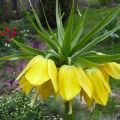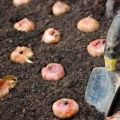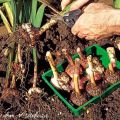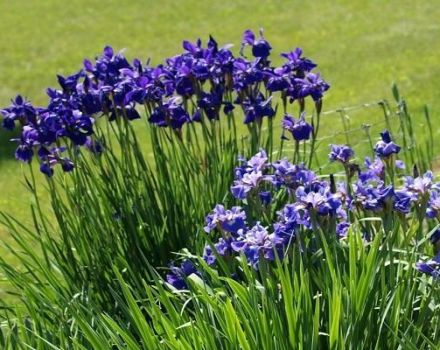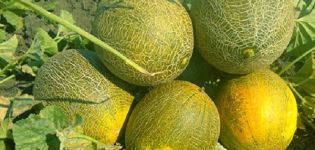Seed and vegetative methods of propagation of tulips, technology and timing
Tulips in the garden or summer cottage are a natural decoration. Beautiful flowers with bright colors will decorate any area. Reproduction of spring tulips is an interesting and enjoyable process for those who love these flowers. There are a huge number of varieties. Each one is distinguished by its original color and shape of the bud. Flowers can be double, goblet or lily-like. You can plant flowers of the same variety or bring out a new special one, which will differ in shade, color of petals or shape of the bud.
Tulip propagation methods
Tulips are propagated in two ways - by seeds and by a vegetative method. Breeding by children, small bulbs, is used more often. Children receive from an adult flower. The method does not require special conditions and does not take much time. Therefore, gardeners prefer vegetative. Reproduction by seeds allows you to develop a new variety, but this requires monitoring climatic conditions, eliminating harm from insects. The soil has a strong effect on seed shoots. Therefore, this method is usually used by breeders.
Seeds
In order to get a new variety with an interesting and unusual color, it is worth doing seed reproduction of a flower. The process, of course, is lengthy, but the result will exceed all expectations. The first flowers with such a breeding will appear only after 3-5 years. You will need to pick up the flowers that you will need for reproduction.
When used
Seed propagation is recommended when breeding a new tulip species. This will require pollinating a particular type of flower with pollen from another or more. You can get a new bud shape or petal shade. Planting seeds without pollination will not work. The decorative qualities of the existing plant will not appear.
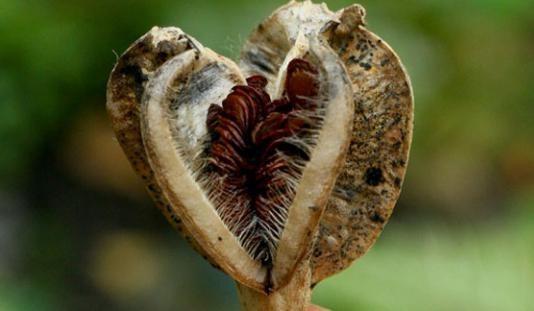
Seed propagation technology
To reproduce in this way, you will need to perform a number of necessary steps. Pollination is carried out artificially. Planting seeds should be carried out next to the bulbs of plants that participated in the crossing.
If the choice fell on plants with different flowering periods, then the collected pollen is recommended to be stored in the refrigerator in a special paper bag.
Anthers must be carefully removed 2 days before the process. Pollinate twice with an interval of 2-3 days. Additional pollination by insects should not be allowed, so the seeds should be covered with paper or a light cloth.
The seeds are removed when the capsule turns brown and begins to crack. If you stay a little longer, the seeds will crumble to the ground. Store in a cool dry place (you can in the refrigerator) at a temperature from 0 to +5 FROM.
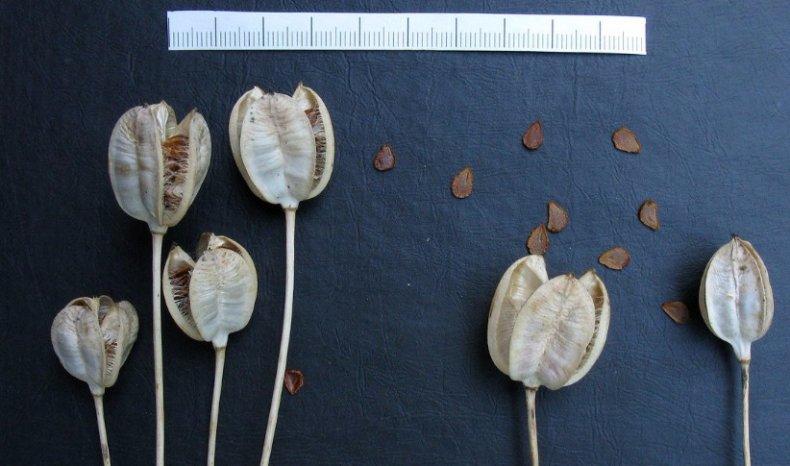
Seeds are first sown in a planting box or pot. The planting depth should not exceed 20 mm.The bulbs will form here. The process usually takes up to 3 years. After that, the resulting bulbs can be planted in the garden.
The first flowers will appear in about 5 years. Often the first flowering is rather weak and dim. The desired result will be in 8-12 years. After that, you can already carry out vegetative reproduction.
Vegetative way
Reproduction of tulips by children - bulbs of an adult plant, is used by practicing gardeners more often. The bulbs are dug out of the soil after they have completely bloomed. Special processing and sorting is carried out so that the bulbs can overwinter and not lose their quality. Storage is responsible for the quality of flowering at subsequent planting. At this time, flower buds are formed.
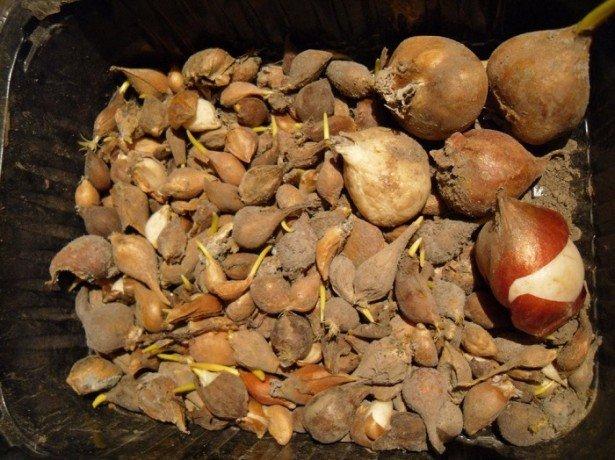
The principle of vegetative propagation
Vegetative propagation is used by gardeners constantly. This method achieves flowering faster and preserves the valuable external features of the mother plant. The process takes place in two stages. The first stage is characterized by the development of the bulb as part of the mother plant. The second stage is independent growth and flowering of the bulb. From one you can get several children. The mother bulb dies at this time.
A distinctive feature of this method is the ability of babies to receive nutrients from mother's scales during the formation process.
Development is uneven. Children begin an independent stage from the development to which they were able to grow in the mother's bulb. In young seedlings, a stolon-shaped shoot is formed - a sign of a young plant. This ability disappears after flowering.
Each daughter bulb inherits different characteristics of the parent plant. Depends on the tulip's own changes. To get a large and beautiful flower, it is recommended to use side children of the 2nd and 3rd analysis. First parsed bulbs can be used in a round shape. Also, the storage of children affects the quality of a young plant.
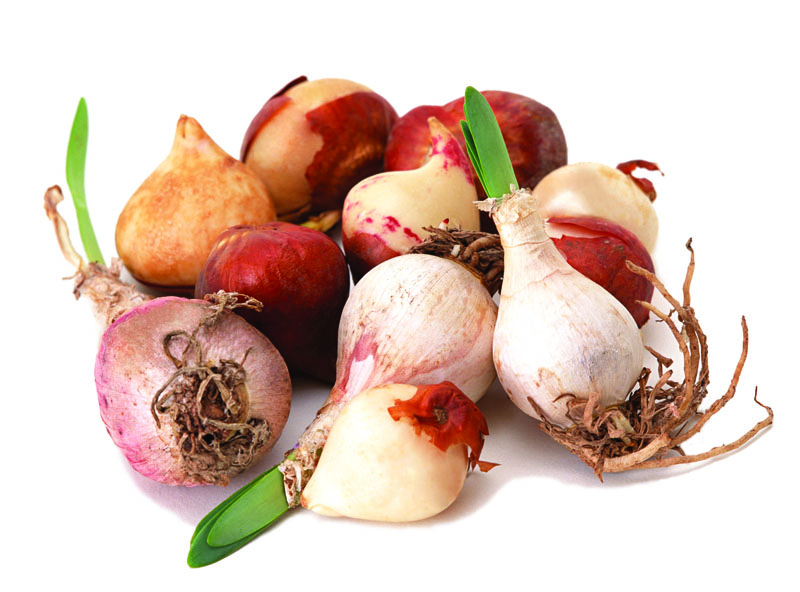
Digging the bulbs
The timing of digging is different for each variety. You need to dig it out after the leaves have turned yellow, but not yet dried. This is the main sign of maturation. It is recommended to leave tulips with green leaves until ripe. If the leaves are dry and easily detach from the stem, then it is too late to dig.
Tulips are usually harvested from late June to mid-July. The timing varies according to the flower's climatic zone. For the middle lane, this is the beginning of July. You should not rush to digging out, because the children will not have time to mature and accumulate nutrients. But even a long wait is harmful to the plant - the bulbs are destroyed. A rainy summer can shift the timing of flowering and drying of leaves, but you should not wait. Prolonged exposure to damp ground can lead to rotting.

You need to dig carefully so as not to damage the bulbs. It is not worth throwing away the damaged species, they are quite suitable for planting (provided that the root system and the bottom are not damaged).
Sorting
The bulbs, dug out and processed, are further graded according to size. The specimens exceeding 40 mm in diameter are of extra class. The first class has a diameter from 35 mm to 40 mm, the second - 30-35 and the third - 25-30. Lateral children are distinguished by categories - the 1st category includes specimens with sizes of 15-25 mm, the 2nd category does not exceed 15 mm.
When sorting the bulbs, the grower can plan the tulip planting for the next year:
- copies of the correct shape can be planted separately, since in the first year there will be only one leaf - they will bloom in a year;
- small flattened specimens will take more time (about 2 years) to plant in the ground to a depth of 3 times the height of the bulb.
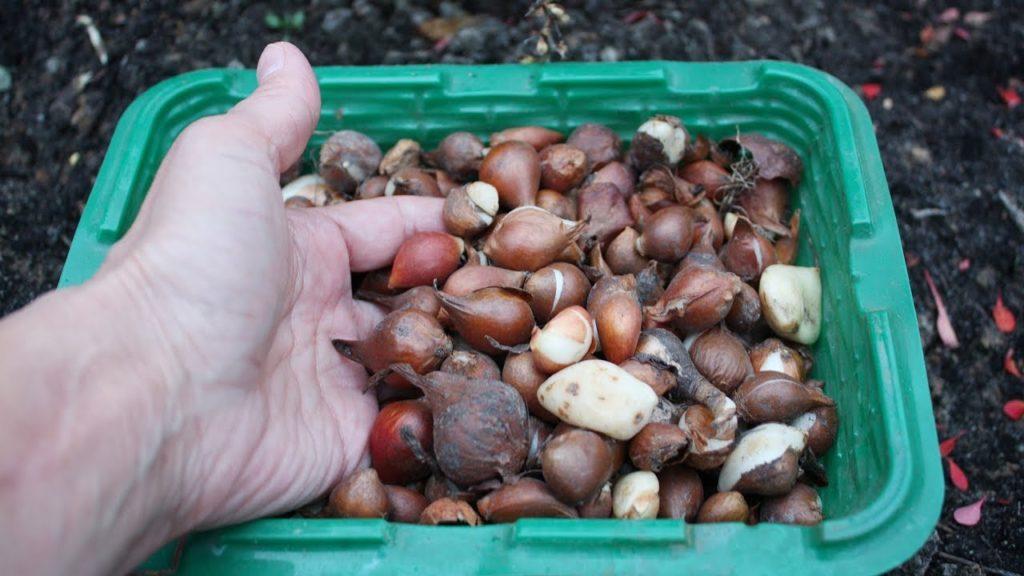
Correct sorting allows you to create a beautiful compositional garden with a clearly planned planting.
Storage conditions
It is recommended to store bulbs in a well ventilated room with a temperature not exceeding 26 С, humidity - 70-80%. It is better to make special perforated drawers in which there will be comfortable storage conditions. They will stay in boxes until autumn, so they should not be lowered into the cellar or placed in the refrigerator. There is a risk of their decay.
Ripening of the bulb in the ground occurs at a sufficiently high temperature. Therefore, during the storage period, they require approximately similar conditions in temperature and humidity. Proper storage will enable strong flower buds to form. The main condition is darkness. Light is not recommended due to physiological disturbances in the bulbs. This can lead to a decrease in the quality of the flowers.
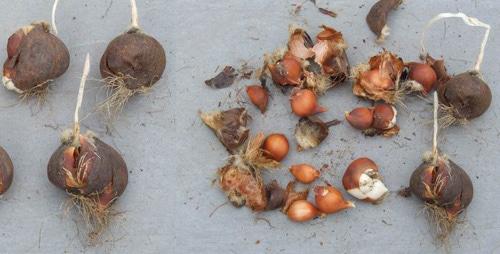
It is not recommended to store bulbs until spring, as they can wake up in a comfortable environment. Therefore, it is better to plant them in the ground in the fall - in September or October.
Which is the best way?
Which method to choose for breeding depends on the purpose of the process. If the goal is to develop a new variety with a new shade and color or a different bud, then it is better to stop at the seed method. The process will be long, but the result will be achieved. As a result, you can get a beautiful unusual tulip that can take an honorable place in the garden among other fellows.
The vegetative method does not require special weather conditions. You can enjoy your favorite flower next year. Maternal traits are preserved, which receive minimal changes.

Gardening Tips
In order for the appearance of the garden to please, you need to make a little effort and follow a number of rules:
- when tulips are propagated by the vegetative method, it is required to properly dig, sort and store the bulbs;
- after digging, the bulbs must be cleaned of soil and roots, dried well and determined for storage;
- correctly carried out sorting will create a beautiful garden;
- the seed method takes time, but the result exceeds all expectations;
- do not leave the bulbs until spring - the quality characteristics may decrease, which will affect flowering;
- you need to correctly calculate the planting depth - this guarantees germination and flowering in due time.
Proper flower care and propagation will help preserve tulip varieties or add new luxurious species that will delight you for a long period of time.


